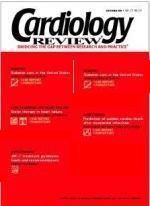Publication
Article
Drug-eluting stents show long-term clinical value
WASHINGTON, DC—Drug-eluting stents continue to outperform bare metal stents in patients treated for coronary stenosis, and now drug-eluting stents have been shown to reduce the risk of restenosis compared with their bare metal counterparts in a trial conducted exclusively in patients with diabetes. These findings were among those released during the late-breaking clinical trial sessions at the TCT 2004 conference.
In a trial known as TAXUS IV, 1,314 patients undergoing elective stenting of single de novo coronary stenoses were randomly assigned predilatation to receive a bare metal stent (control group) or a paclitaxel-eluting stent (TAXUS). All patients received antiplatelet therapy (clopidogrel) for 6 months after the stenting procedure. The 2-year follow-up results were reported by Gregg W. Stone, MD, vice chairman and director of cardiovascular research and education, The Cardiovascular Research Foundation, Lenox Hill Heart and Vascular Institute, New York City.
The rate of major adverse cardiac events (MACE) was 14.7% in the group assigned to the drug-eluting stent compared with 24.9% in those assigned to the bare metal stent. Late events, those that occurred between 1 and 2 years, occurred in 5.1% of patients receiving a drug-eluting stent and in 7.3% of the controls (P = .09). The rates of target lesion revascularization, target vessel revascularization, and target vessel failure between year 1 and year 2 were also lower with the drug-eluting stents, although the difference reached statistical significance only for target lesion revascularization (1.6% versus 3.6%; P = .03).
“At 2 years’ follow-up, the incremental benefit of having received the TAXUS stent rather than a bare metal stent continues to increase, without evidence of late catch-up,” said Dr. Stone. The clinical advantage with the drug-eluting stent was realized across all patient subgroups, including those with small vessels, long lesions, or diabetes, he added.
A sirolimus-eluting stent was associated with a significant reduction in in-segment late lumen loss and restenosis compared with a bare metal stent in patients with diabetes who had de novo coronary stenoses, according to Manuel Sabatè, MD, of the Hospital Clinico San Carlos, Madrid. In the Diabetes and Sirolimus-eluting Stent trial, 160 patients with 221 stenoses were randomly assigned to a sirolimus-eluting stent or a bare metal stent. To be eligible, patients had to have type 2 diabetes or type 1 diabetes with evidence of ischemia. Thirteen percent of treated lesions were total occlusions.
At 9 months, in-segment late lumen loss was 0.08 mm in the patients assigned to a sirolimus-eluting stent compared with 0.44 mm—an 82% reduction (P < .001). This difference in in-segment late lumen loss resulted in a 76% reduction in in-segment restenosis, from 33% to 7% (P < .001) and an 84% reduction in in-stent restenosis, from 31% to 4.9% (P < .001), in patients receiving the drug-eluting stent.
The 9-month rate of MACE was 11.3% in the drug-eluting stent arm and 36.3% in the bare metal stent arm (P < .001). The rate of target lesion revascularization was also significantly less in patients receiving the sirolimus-eluting stent (7.5% versus 31.3%; P < .001).
In a third presentation, percutaneous coronary intervention (PCI) using a sirolimus-eluting stent was associated with a lower rate of MACE when compared with historical MACE rates of patients undergoing coronary artery bypass graft (CABG) surgery or PCI using a bare metal stent, said Patrick Serruys, MD, PhD, chief of interventional cardiology at Thoraxcenter-Erasmus University, Rotterdam, the Netherlands.
In the second Arterial Revascularization Therapies (ARTS II) study, 607 patients with advanced coronary disease underwent PCI with a sirolimus-eluting stent. The MACE rate in ARTS II was compared with the MACE rate in the CABG and bare metal stent arms
in the ARTS I trial, which included 600 patients.
The rate of MACE at 6 months was 6.4% in the patients in whom the drug-eluting stent was implanted in ARTS II, compared with 9.0% in the CABG arm in ARTS I and 20.0% in the bare metal stent arm in ARTS I. The lower MACE rate was observed in the drug-eluting stent arm in ARTS II, even though ARTS II included patients with more complex stenoses and more patients who underwent triple-vessel stenting than in ARTS I, said Dr. Serruys.
